486 Search Results for opportunities
April 5, 2012
by Robin Parker -
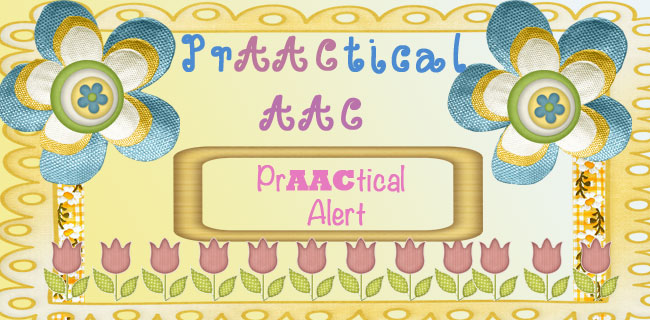
Toca Kitchen Monsters – FREE, A GIFT FROM TOCA BOCA Wow, another amazing & educational app from Toca Boca. Learn to cook and feed the Toca Kitchen Monsters. This app is really fun to play and it’s free (not even any in-app purchase opportunities). The educational part of this app can be focused on cooking and eating language concepts, sequencing of language, and real-life skills (choosing food, cooking, and feeding or eating someone). Although the scope and sequence of this app is ‘real’, there is a main fantasy or pretend play aspect (other than the cooking and eating) – you are feeding funny looking monsters. This is great because all pretending is symbolic and so is language! So get your Toca Kitchen Monsters now! Look out for an updated post tomorrow about how we have HijAACked this app.
April 1, 2012
by Robin Parker -
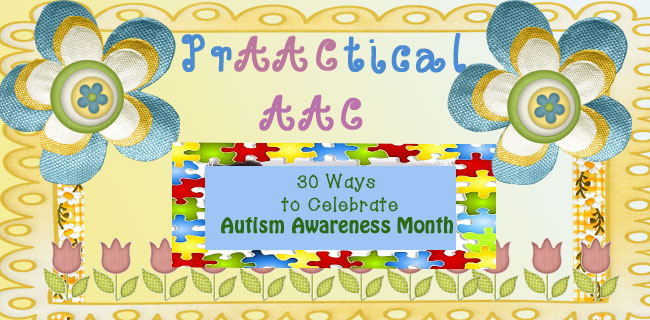
Please check out the most recent set of suggestions here. We love getting EVERYONE involved in Autism Awareness Month. We like to take a goal focused approach to our Autism Awareness Month activities by choosing projects that facilitate positive attitudes & discussions. We pass out materials, have contests, go to events, do extra talks, and try and engage EVERYONE we know and even some we do not know. We do a lot of shopping (with small amount of money, but we have to EAT and accessorize). Our families, pets, friends, and students all participate. It is a month filled with purposeful fun. Here are some of the things we will be doing. Please share any activities or projects that you know about. Bake, share, & eat some desserts. Need inspiration?.. try these Puzzle Piece Rice Crispy Treats Join the webinar Autism Explosion by Dr. Coplan will be shown... [Read More...]
March 24, 2012
by Carole Zangari -
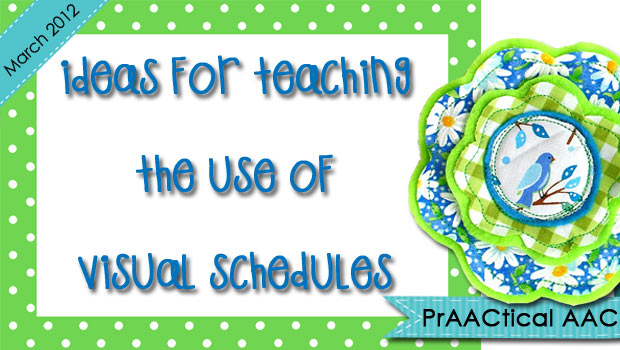
There’s nothing more depressing to us than walking into a classroom in the spring and seeing pristine visual schedules. Why? Because it probably means that the students aren’t really using them. We cheer when we see schedules that are rumpled and dog-eared, not shiny. Show me a battered and tattered visual schedule, and I’ll show you one that gets used every day. Sadly, that’s not always the case. – The bridge between having a visual schedule and consistently using it is one that many learners don’t seem to cross. Here are some of our ideas for helping your AAC learners to the other side. – 1. Have a plan to teach the schedule. If you are working one-on-one with a learner, you can easily implement the schedule and get them using it with most-to-least prompting. If you’re working with a group or a classroom, consider staggered implementation. Teaching 12 beginners... [Read More...]
March 13, 2012
by Carole Zangari -
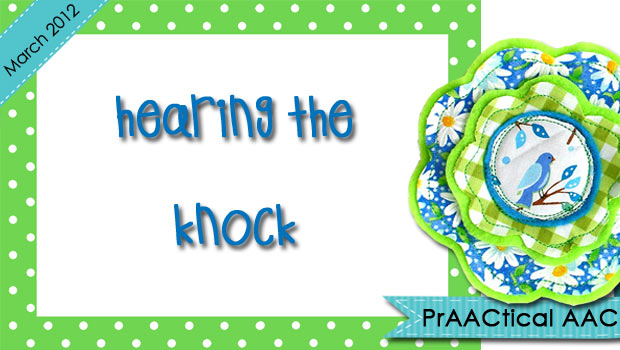
Wishes are wonderful things, seducing us with their promise and possibility. So with the luck o’ the Irish in mind, we’re sending forth a wish for something intangible, the big O: Opportunity. — Our AAC wish list for this month is all about opportunities. Opportunity. It has such a nice ring to it. Our parents and teachers tried to prepare us to recognize opportunity, and promised us that it would come knocking. – But sometimes the knock of AAC opportunity is drowned out by other things. Sometimes we just don’t hear it. We may miss the opportunity to teach a new clinician how to expand the language of a teenager learning to use a speech generating device. We may miss the chance to create the teachable moment for a child just learning to use AAC to make a comment. We might miss the opportunity to encourage a parent to give... [Read More...]
February 21, 2012
by Robin Parker -
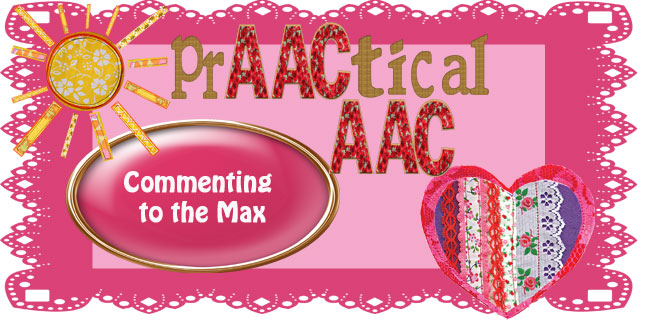
Communication and language involves so much more than requesting. Without much effort, communicators with typical language development and even delayed language development communicate for many reasons. Showing or telling about a shared interest comes easily and is a form of commenting to communicate. Commenting is one of the most social reasons that we communicate. So, it makes perfect sense that children with social communication disorders may not have an easy time with these social aspects of communication and language. We know many children who frequently use long (or short) sentences to say ‘I want the blue truck’, ‘I want the big ball’, or even ‘Can I have the cold drink’. They may even communicate frequently to ask for toys, games, or activities of their choice. All of the requesting is GREAT but not enough to be part of comprehensive conversations and social language interactions. It is not that children with... [Read More...]
February 19, 2012
by Carole Zangari -
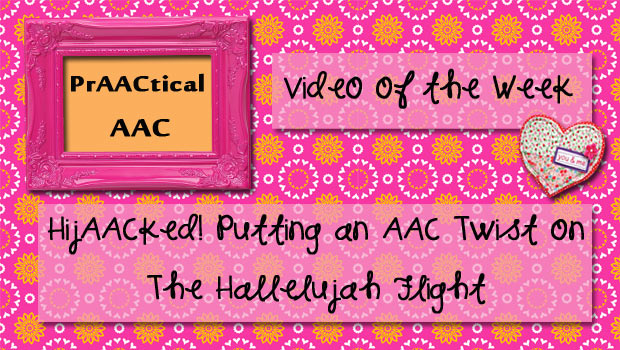
This is the first in an occasional series of posts in which we take activities designed for students in general education and tweak them a bit to make them into opportunities for AAC teaching. We’ll be building on great ideas from clinicians, parents, and educators (giving credit where it is due, of course). – The first HijAACked activity is from the Classroom Magic blog by Selina Smith. We chose this one because it gives us a chance to promote one of our favorite online book sources, We Give Books and share a wonderful book that supports Black History Month. We Give Books is a project of the Pearson Foundation and Penguin Books (you can find out more here). The Hallelujah Flight is the story of pilot James Banning and his good friend, mechanic Thomas Allen, flew cross country during the Great Depression. Written by former teacher Phil Bildner, this book... [Read More...]
February 18, 2012
by Robin Parker -
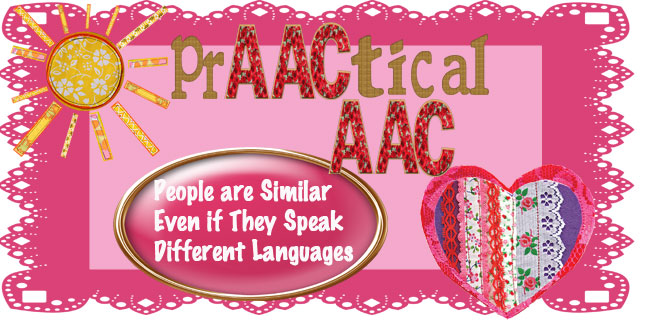
We just had a conversation (one of many) about teaching someone how to USE an AAC device. A colleague who is learning about AAC brought up the idea that teaching AAC was like teaching someone a different language. Thinking about that made us realize it was also like learning another language for both the communicator and the communication partner. In fact was not ‘like’ learning another language, it really WAS another language. It may be another form of English (for us, Spanish for others, Mandarin for others still) but for our students/clients, learning an AAC system is just like trying to learn a new language without ever going to the country that the language is spoken and very rarely hearing other people speak this new language. People may also have trouble understanding this new language. There are few opportunities for an AAC user to be fully immersed in AAC... [Read More...]
February 17, 2012
by Carole Zangari -
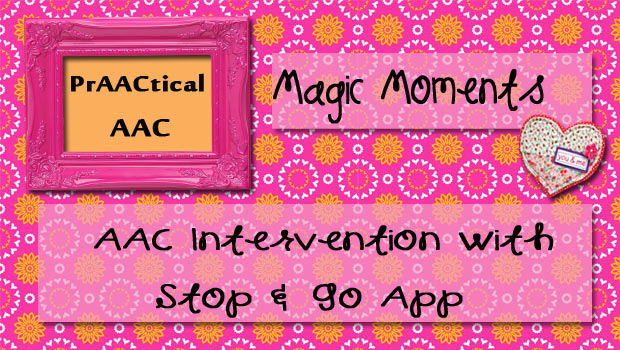
We’re always looking for engaging ways to give our preschool children practice with their core word vocabulary. Stop and Go by ShortStack is an app that will get your little friends using core language without even realizing how much practice they are getting. — We love the simple structure of the app, which shows vehicles stopped at a traffic light. We see and hear the name of the vehicle and then press the green light for the vehicle to go. It has an English or a Spanish option and lots of interactive elements to try and then talk about. — Magic Moments with Stop and Go 1. Core Word Practice: As expected, there are tons of opportunities for the child to move the vehicles in this app. Using the strategy of controlled access, we can elicit ‘stop’ and ‘go’ multiple times in this game. 2. More Core Word Practice –... [Read More...]
February 16, 2012
by Carole Zangari -
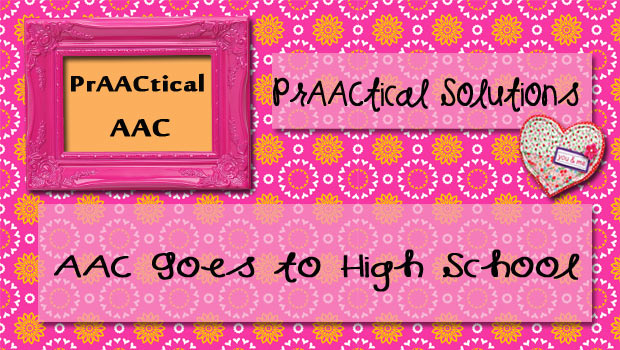
One of the reasons that we fell in love with AAC community was the seemingly boundless capacity for creativity. Creativity is something that most people associate with art and writing more than clinical work, but the reality is that creative problem-solving is a key skill among successful SLPs. As clinical educators, we’re always interested in finding ways to help our students (future SLPs) to analyze a problem situation and come up with a host of possible solutions. Creativity is enormously valuable in that process and we’re always looking for great examples of creative approaches to tough AAC problems. – So I was very intrigued by the way that educators, administrators, and therapists in British Columbia set out to help high school students with AAC needs master their systems. Approximately 5 years ago, SET-BC began the process of developing an AAC course that could be used for credit in provincial high... [Read More...]
February 11, 2012
by Carole Zangari -
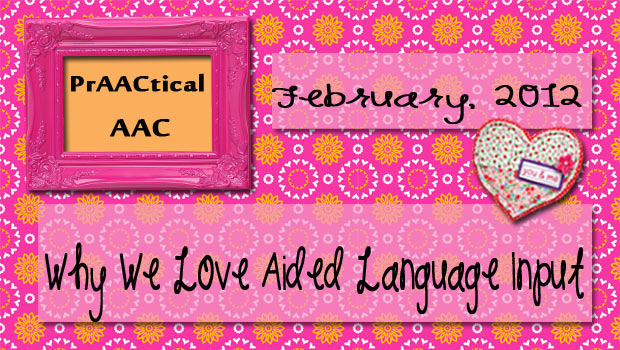
The concept of Aided Language Input is simple: Speak AAC to the learner. If you were teaching her French, you’d speak to her in French. No one would dispute that hearing the new language is an essential prerequisite to learning it. It’s the same in AAC. If we want our folks to learn to express themselves with AAC, they have to have a lot of expose to people speaking AAC. – Here are the top reasons we are such strong advocates of this as an intervention strategy. – 1. It has a strong research base, thanks to studies by Kathryn Drager, Cathy Binger and Janice Light, Jennifer Kent-Walsh, Shakila Dada, and others. – 2. It is the fastest way for a clinician, teacher, or parents to get familiar with the language in the AAC device. If we don’t know what words are in there and where they are located, can... [Read More...]









